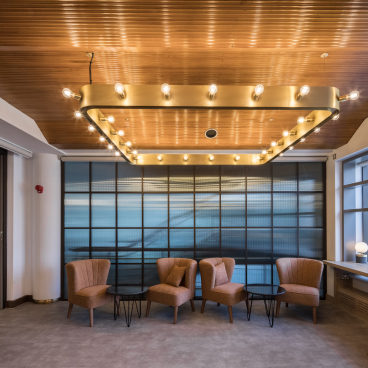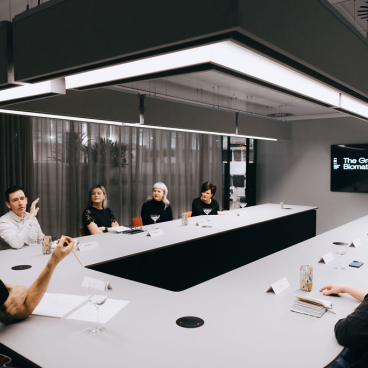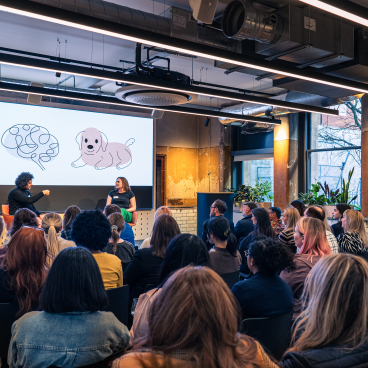The View with Professor Jaime Toney, director of the Centre for Sustainable Solutions at the University of Glasgow.
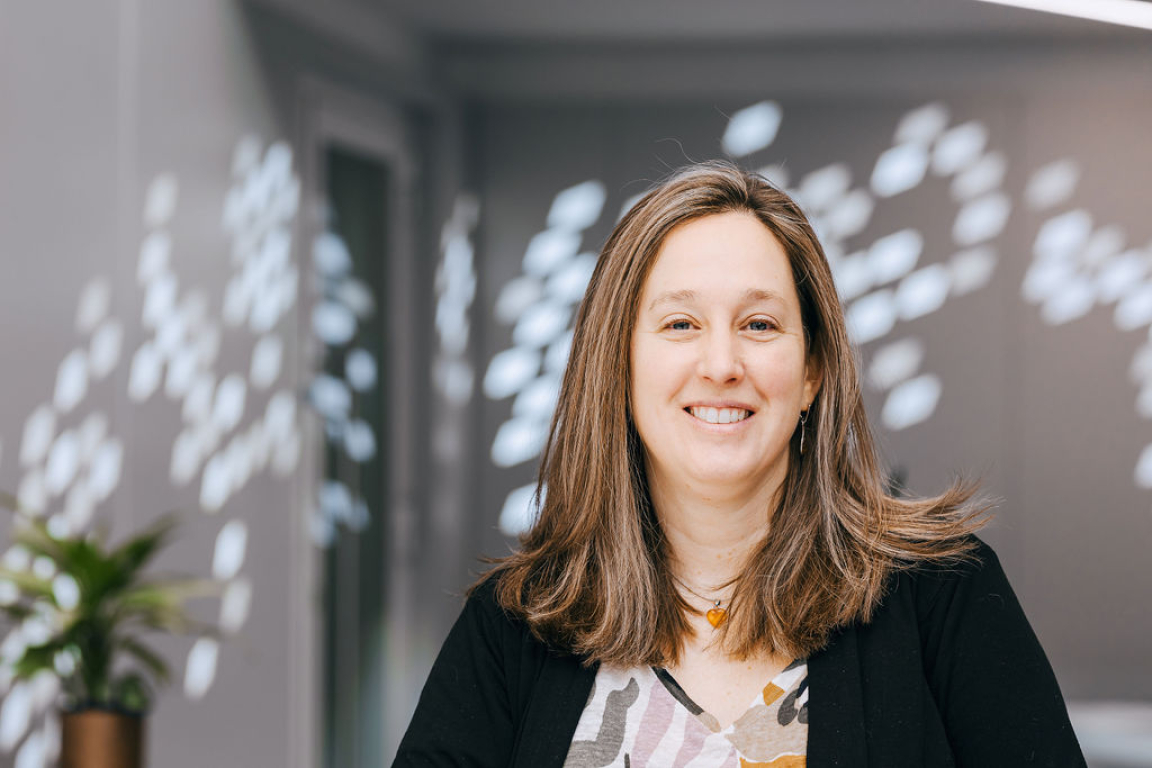
According to Professor Jaime Toney, director of the Centre for Sustainable Solutions at the University of Glasgow, doughnuts could be the key to unlocking a more positive future for our planet. Intrigued? Read on to find out how…
Guests at our first Material Source Studio Presents: The View event, which took place at our Glasgow Studio earlier this month, were introduced to the future-facing initiatives being undertaken by Professor Jaime and her team of 60 researchers that make-up the GALLANT project.
Working across a range of disciplines – from soil health to policy - and in partnership with Glasgow City Council and other private and public sector organisations across the city, GALLANT seeks to explore, and create solutions for moving forward to a more sustainable future in a way that’s equitable.
Here, we provide a snapshot of how GALLANT started, what it means to architects and designers, and how a certain sweet treat could create the perfect framework for a greener future.
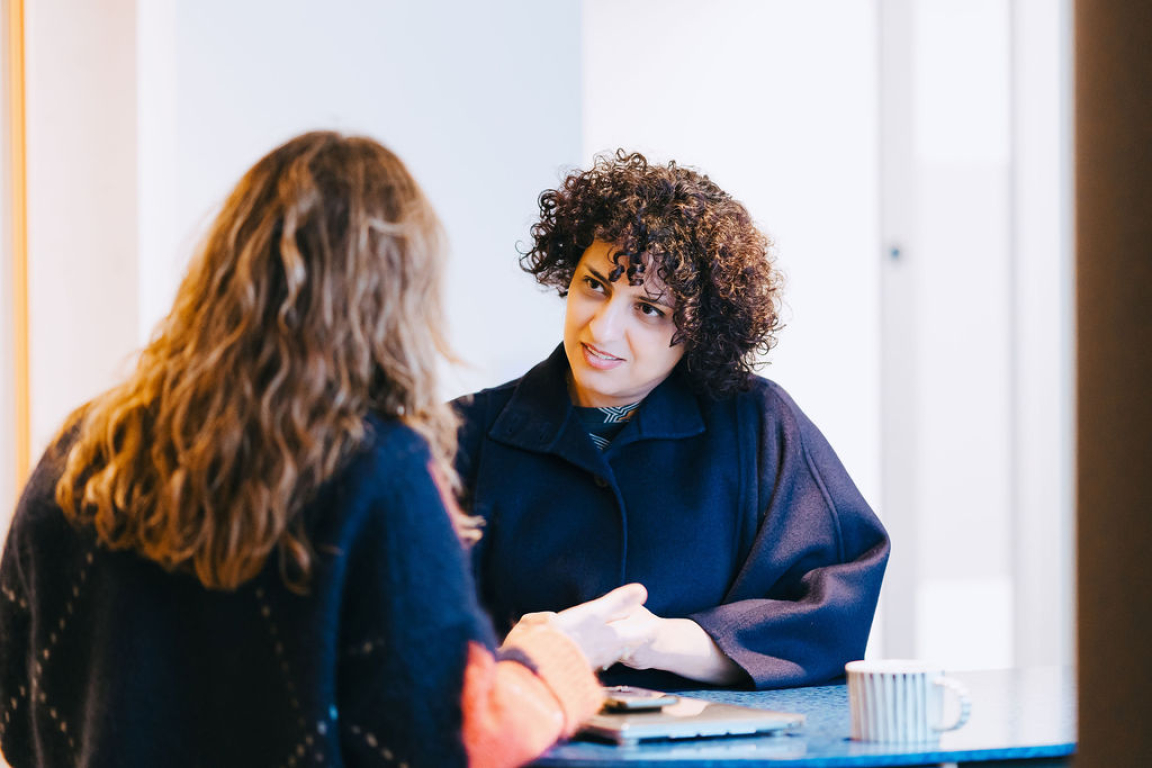
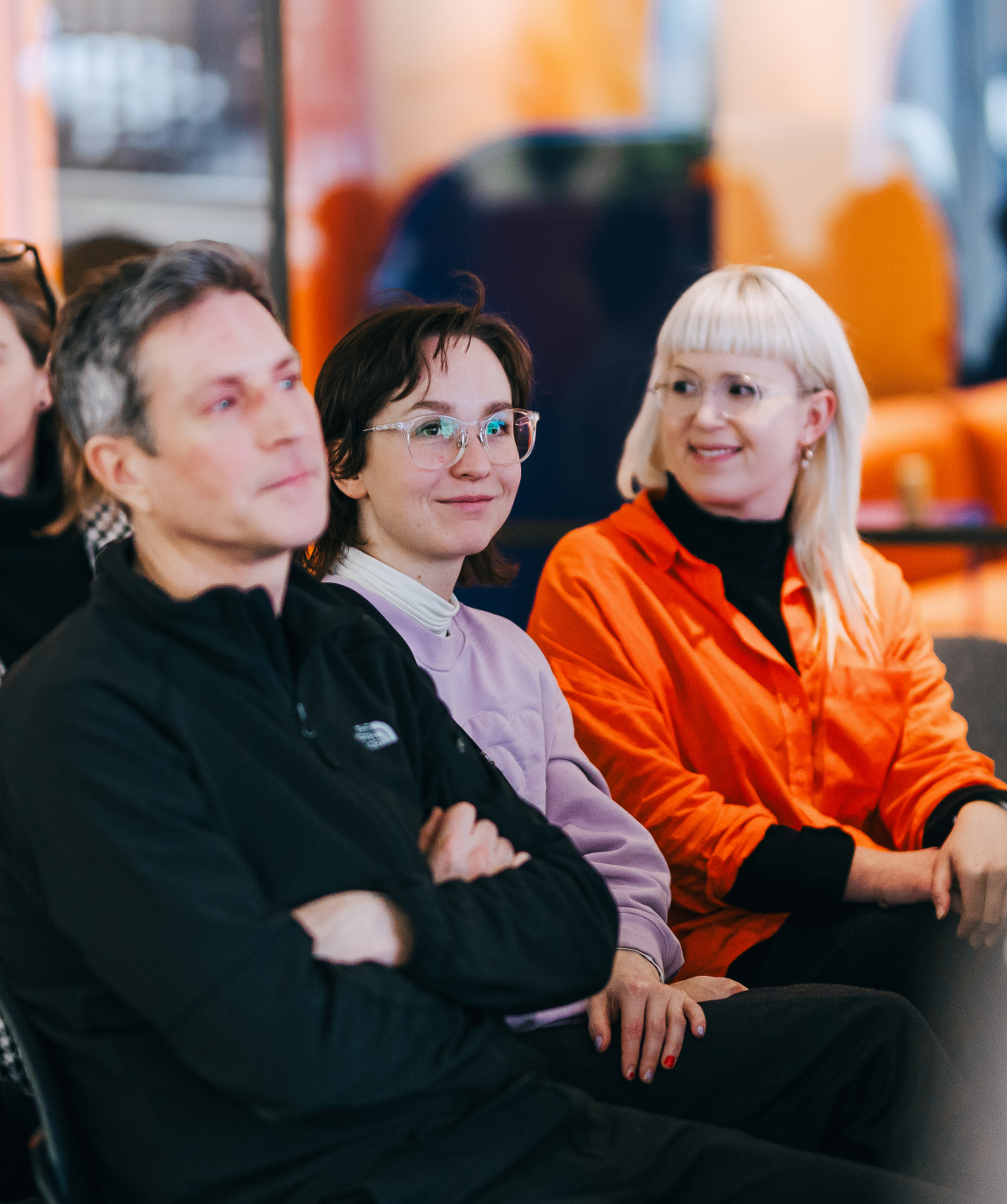
When and why was GALLANT set up?
Jaime explains, “The project came about in 2020, when Glasgow was preparing to host COP26 and we’d gone into lockdown. The question was around how to secure a ‘green recovery’ coming out of the Covid-19 pandemic. So, we brought practitioners, researchers, and policy makers together to undertake a set of solution-focused dialogues with the aim of understanding where the urgent action was needed to realise a sustainable future.”
Off the back of this, three “challenge areas” were established: implementing green futures, low carbon energy for housing, and rethinking the city’s consumption. But, as Jaime went on to highlight, these challenges ran deeper than just at surface level.
“Through the dialogues we got an overview of the complexities in moving forward, but were able to identify common themes that emerged across all of our conversations – a realisation that environmental sustainability and social justice need to go hand-in-hand, solutions need to be co-conceived with our communities, align with policy, strategy and decision making, and any decisions that are made need to be backed by data and evidence – not just KPIs, but also the stories that come out of the city’s communities that tell us what their lived experiences, and visions for the future, are.”
Once this insight was gathered, funding was required to take it forward. Luckily, “a funding call came in for Changing the Environment - to encourage people to value nature more – and after taking part in a roundtable with senior leaders from around the city we were successful in receiving the money. This enabled us to take an interdisciplinary and systems approach to climate resilience in a move towards meeting the Net Zero targets, looking through social and ecological lenses.”
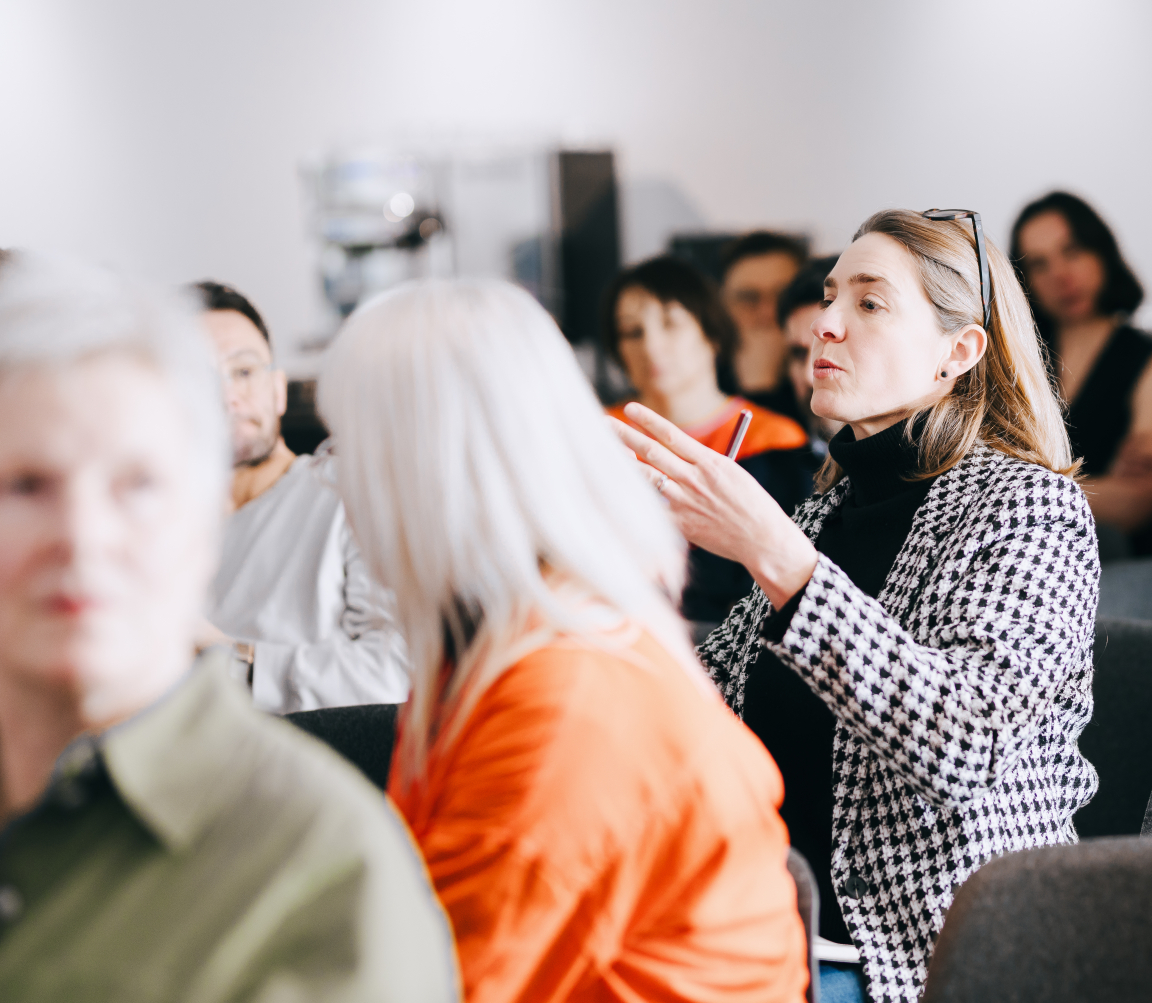
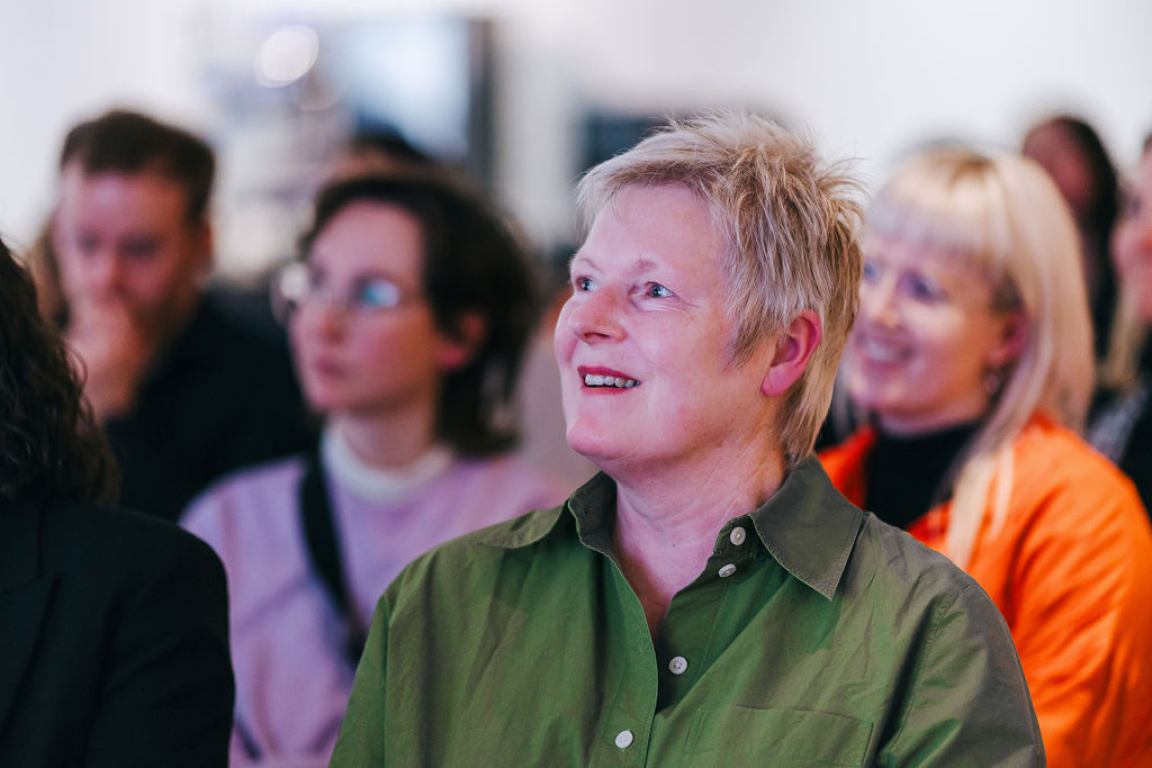
The transformational sweet spot
With practicality in mind, GALLANT was developed to establish solutions that can be adopted and used in practice. To help activate their research, a framework was needed. Cue doughnut economics.
Though as Jaime explained, “people around the world are already using this framework”, it particularly resonated with GALLANT. When discussing the different elements that make up what “sustainability” means, there are often conflicting factors – such as those which have been highlighted in our recent seminars and roundtables on the topic. Carbon versus circular, biodegradable versus reuse… With the doughnut economics framework, all of these are considered.
“At the centre of the doughnut are social foundations, but they need to be tensioned against the planetary ceiling. We know resources on the planet are finite, so we need to make sure that while we’re bringing the social foundations up around people, we’re not breaching important environmental thresholds in the process.”
So detailed is the framework that there are 44 components included in total. GALLANT focuses on viewing it through four lenses: ecological and social domains, plus values and impact both locally and globally.
“We hope Glasgow will be one of the leading cities in operationalising the doughnut”, commented Jaime.
“The challenge is always the next step isn’t it”, said Rob Morrison, executive director, Agile City from the audience - “What other cities are making good headway with this?”
Jaime cited Amsterdam, Portland and Pittsburgh – “Amsterdam has operationalised in a silent way as part of their circular economy.”
But there are still many facing barriers to implementation. “Bhutan, Melbourne and Brussels we’ve been in conversations with, but now everyone is looking to implement - they’ve exhausted the tools.”
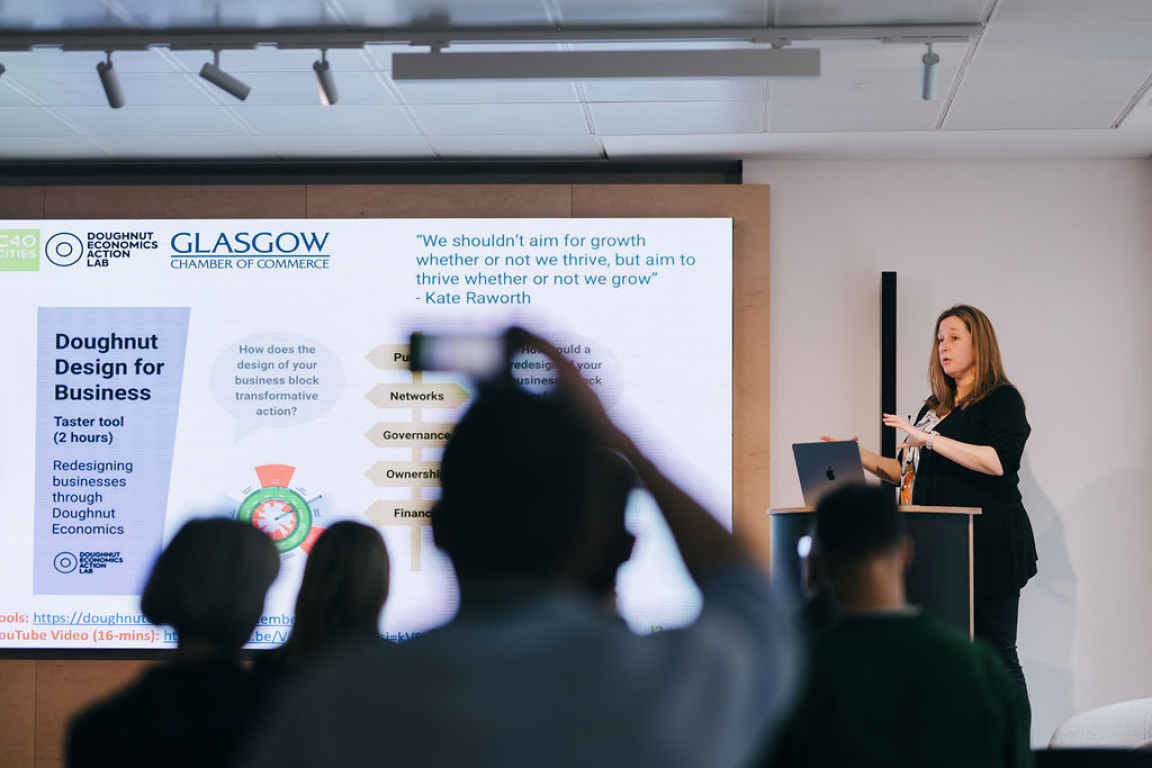
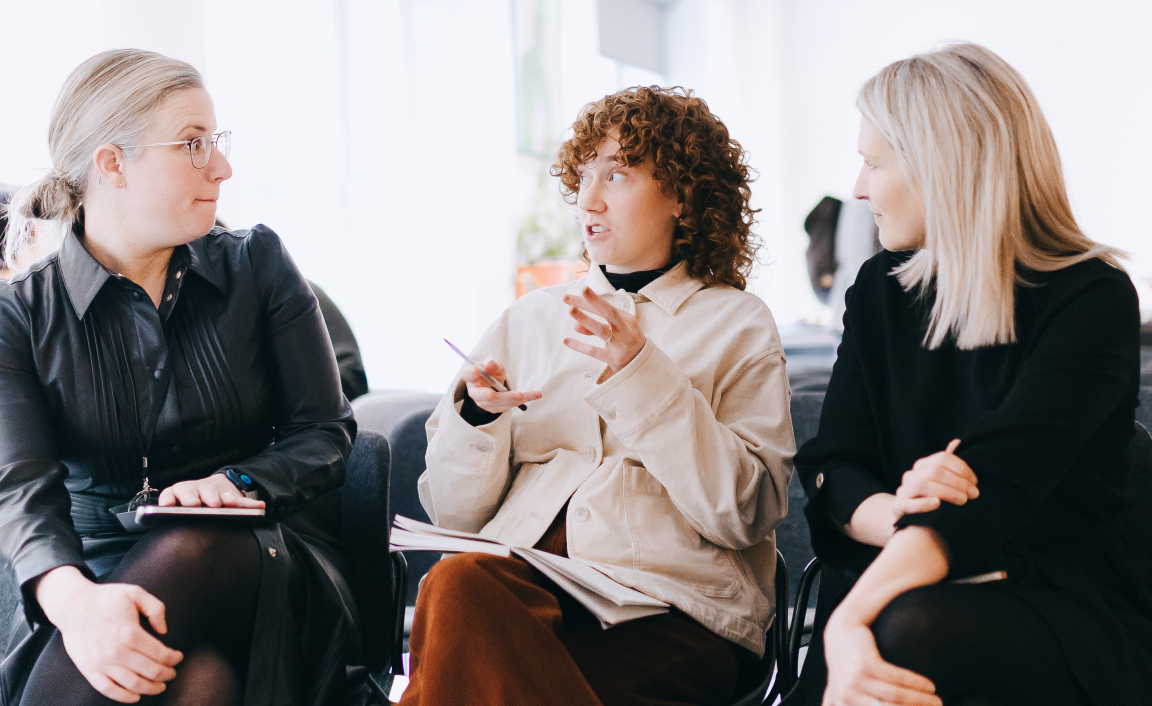
What are GALLANT's initiatives specific to the built environment?
In a bid to combat, and in some cases make the best of, the adverse weather effects already being witnessed due to climate change, Jaime outlined climate resilient urban riverscapes and flood adaptation as a focus, with researchers looking to locations in China where solutions have been found that better connect people with nature rather than rally against it.
With this in mind, GALLANT is also exploring the social benefits of urban biodiversity, looking at how biodiversity corridors can link up habitats across the city of Glasgow. This includes ‘bee corridors’ – which Jaime highlighted in response to a question from Jean Camplisson, design director, c2:concepts, from the audience, around whether anything was already in place to encourage a more biodiverse city centre.
Fellow audience member Andrew Hadden, associate, HLM Architects, flagged that work has also been done around climate resilience by the Glasgow Institute of Architects. Watch the webinar here.
From resilience to regeneration - regenerating land through diverting waste streams of CO2 from businesses and injecting it into contaminated soils to create new materials i.e. blocks of carbonate, and build back healthy soils using coffee grounds and soy bean waste – is currently being assessed at lab-scale with a view to take it to site-scale in the near future.
Asking the question: “how do we get more people to walk and wheel across the city, while stopping car use for under 5km?” is also being posed. Putting the spotlight on the 128 streets that make up Glasgow’s city centre, the GALLANT team is finding barriers to using infrastructure – whether those be safety, psychological, or perhaps even due to the weather.
Honing in on the residential sector, emphasis is being put onto renewable sources of energy for use at community scale.
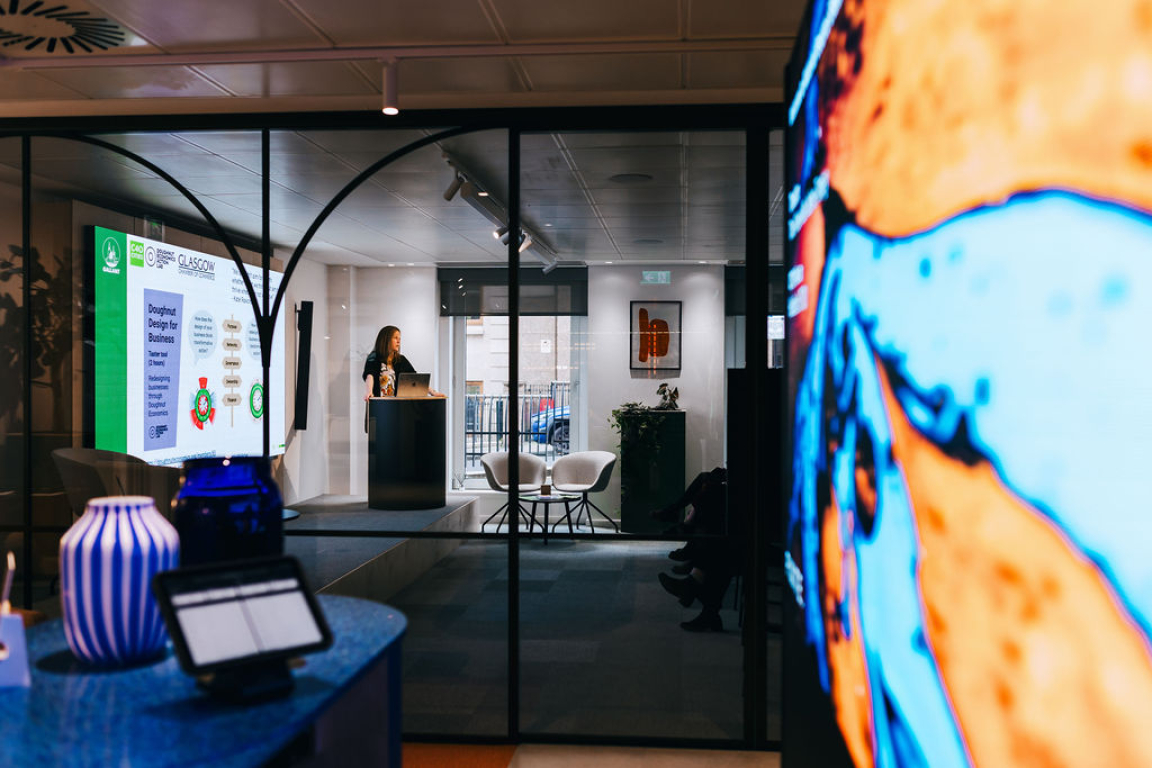
Beyond utopia
Though while these initiatives all sound extremely positive in theory, a theme that’s all too common when discussing the implementation of more sustainable practice - cost - repeatedly comes up as a potential roadblock.
“When looking at planning through to development often the social and ecological values are considered in the design phase almost in a utopian way. But we’ve witnessed frustration from our stakeholders when – because of cost – these factors are dropped”, shared Jaime.
On the subject of economics, in order to meet its Net Zero target, Glasgow is said to require around £30billion. Therefore, buy in from businesses around the city is crucial. And when it comes to utilising what’s already in place in terms of building stock, in reply to a query from audience member, interior architect, Kirsten Davis, “how much engagement have you had from developers in terms of retrofitting the buildings we already have versus new development, and how easy will it be?” Jaime responded - “retrofitting won’t be easy” due to a lack of incentive in place. "A strategy must come from the Government."
But Jaime remains hopeful. “How do we change utopian vision to winning hearts and minds in architecture? We make things good for both people and the planet.”
The GALLANT project’s funding ends in 2027, but there are already plans to extend the work of its researchers in collaboration with the Glasgow Chamber of Commerce to bring doughnut economics to the fore in order to secure a more regenerative future. To find out more, visit www.gla.ac.uk.
Huge thanks to Jaime for sharing an overview of GALLANT’s work with our Studio community, and to all the guests that came along and engaged in the conversation. Our aim with The View is to help bridge the gap between academia and industry to further the progress in securing a more sustainable future. Stay tuned to our What's On for upcoming sessions.
All image credits: Lewis Cannon



